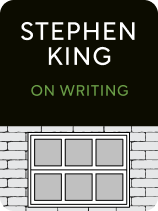

This article is an excerpt from the Shortform summary of "On Writing" by Stephen King. Shortform has the world's best summaries of books you should be reading.
Like this article? Sign up for a free trial here .
For Stephen King, writing style is part of his success. But what is King’s writing style? Does he follow typical writing rules about style? What are they?
Like many other successful writers, Stephen King’s writing style uses tools like avoiding adverbs and passive tense in order to create great writing.
Read more about Stephen King, writing style, and how to hone your craft.
Stephen King: Writing Style
Stephen King’s writing style is uniquely his own, and in his memoir On Writing, he suggest that you learn your own writing style instead of trying to follow a “Stephen King writing style.” With that said, you can follow some rules for stronger writing. King has two glaring dislikes: passive tense and adverbs.
Avoid Passive Tense
Passive tense arranges words so that things are done to subjects. “The car was started by the driver.” “The discovery was announced with great fanfare.” “The meeting is scheduled for seven.”
All of these sentences sound weak. In active tense, the subject does the action. “The driver started the car.” “The grandmaster announced the discovery with great fanfare.” “The meeting’s at seven.” Don’t these sentences feel better?
This is common enough advice, but why do writers still use passive voice? Because it’s safe. Passive voice avoids the need to assert a subject doing a deliberate action. Passive voice is the refuge of timid, uncertain writers.
Avoid Adverbs
Adverbs modify verbs, adjectives, or other adverbs. They usually end in -ly, as in “Tom started the car dejectedly.” Stephen King’s writing style avoids adverbs.
Like passive voice, adverbs are a sign of weak, timid writing. Writers often use adverbs to make sure the reader knows exactly what is happening. The side effect of adverbs is to blunt the power of the verb.
Shortform example: Take this passage from Twilight by Stephenie Meyer, a notorious abuser of adverbs.
“‘As if you could outrun me,’ he laughed bitterly.
He reached up with one hand and, with a deafening crack, effortlessly ripped a two-foot-thick branch from the trunk of the spruce.
… I’d never seen him so completely freed of that carefully cultivated facade.”
This passage could be rewritten without adverbs:
“‘As if you could outrun me,’ he laughed.
He reached up for a two-foot-thick branch on a spruce and ripped it off with a deafening crack.
…I’d never seen him so free of his facade.”
Instead of using adverbs, make the context clear so that the adverb becomes unnecessary. If Tom is starting the car, the prose preceding it should be so clear it makes “dejectedly” redundant.
Shortform example:
Tom sat for ten minutes, imagining the look on his boss’s face as he pounded out the email at 3AM that morning. He sighed and started the car.
Poor writers also use adverbs in dialogue to break up the monotony, as in “‘Put down the gun,’ she pleaded tentatively.” Delete the adverb, and as a default use the simple “he said, she said” construction.
Fear Drives Bad Writing
The pattern underlying bad writing is fear—fear that your reader won’t understand you, or fear that you sound like a simpleton. Have confidence. You probably know what you’re talking about, and good writing is about how well you tell the truth, not how fancy your language is. This is one part of Stephen King’s writing style that might be worth considering.
Paragraphs
Paragraphs are the next level of organization above the sentence.
Paragraphs communicate rhythm and intensity. Detailed expository writing has dense, long paragraphs. Easy fiction has short paragraphs and airy dialogue. When you open a book, you can tell at a glance what the writing will be like.
In expository writing, paragraphs tend to have a logical structure—a topic sentence, followed by sentences that support the topic sentence. This is a methodical structure that keeps the thinking organized and the writing focused on the topic.
In fiction, you have more freedom. You can use paragraphs to communicate a rhythm and beat, to enhance character descriptions or actions, to transition. You can break up a cohesive paragraph into multiple short paragraphs to transmit the right energy. A paragraph can be as short as a single word or as long as a dozen pages.
Paragraphs may communicate more than the sentences they contain. Thus King considers the paragraph, not the sentence, as the basic unit of writing.

———End of Preview———
Like what you just read? Read the rest of the world's best summary of Stephen King's "On Writing" at Shortform .
Here's what you'll find in our full On Writing summary :
- Stephen King's personal writing habits that led to superstar books like Misery and It
- How to make a story and characters feel real
- Why you should never use adverbs






